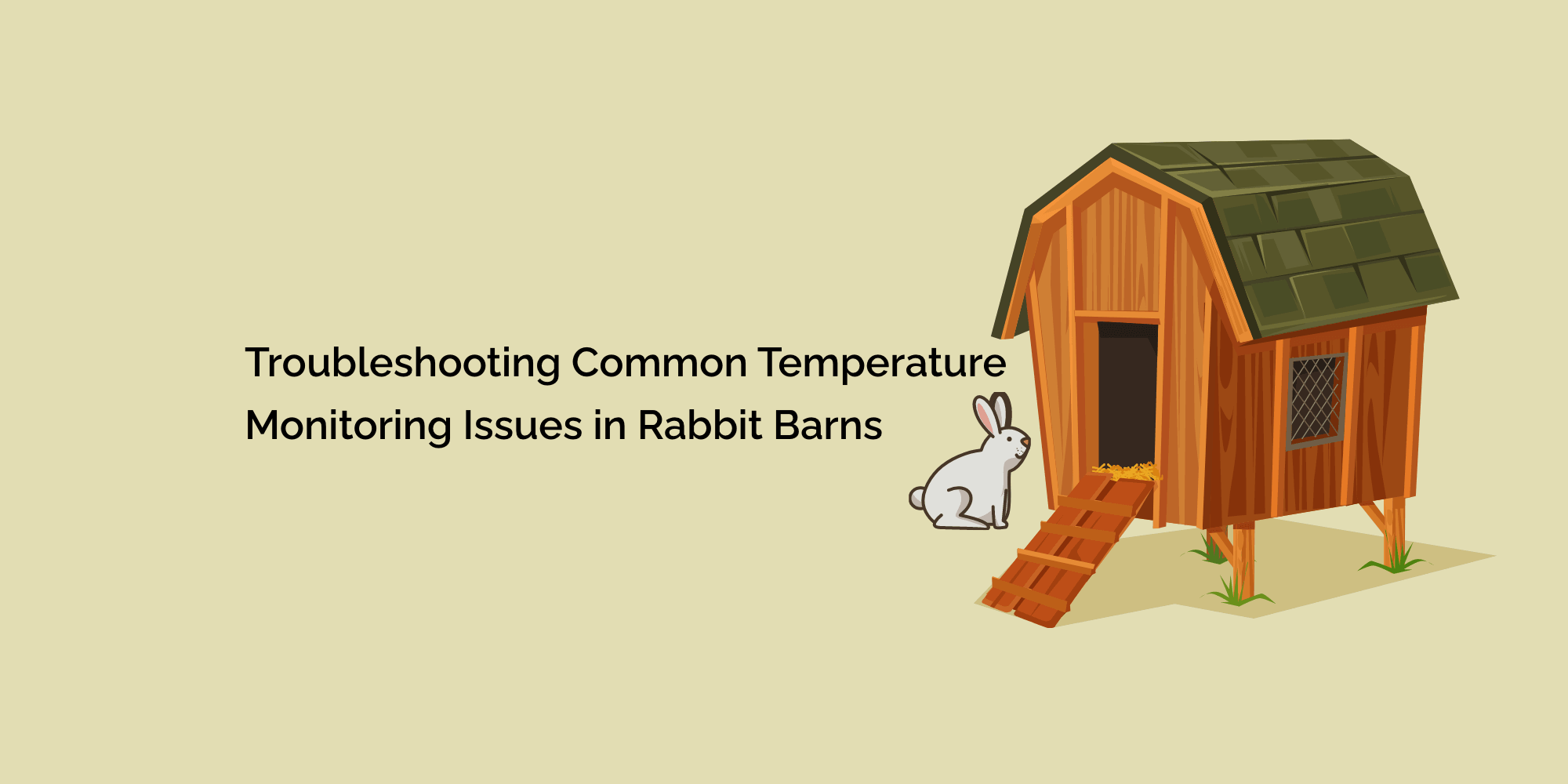Temperature monitoring is a critical aspect of rabbit farming that directly impacts the well-being and productivity of the animals. As a responsible rabbit farmer, it is essential to maintain a comfortable and stable environment within the barn to ensure the health and growth of your rabbits.
However, like any technological system, temperature monitoring systems can encounter various issues that may lead to inaccurate readings or system failures.
In this comprehensive blog, we will delve into the various common temperature monitoring issues that can arise in rabbit barns and provide detailed troubleshooting tips to address these problems effectively.
Understanding the Importance of Temperature Monitoring
Before we delve into troubleshooting temperature monitoring issues, let's first understand the significance of this practice in rabbit farming. Maintaining an appropriate temperature in the barn is essential because rabbits are highly sensitive to temperature changes.
A temperature that is too high or too low can stress the animals, affect their growth, decrease reproductive performance, and even lead to fatal health issues. Temperature monitoring allows you to detect fluctuations promptly and take necessary corrective actions to maintain an optimal environment for your rabbits.
Common Temperature Monitoring Systems Used in Rabbit Barns
There are several temperature monitoring systems available in the market, each with its pros and cons. The choice of the system depends on the size of your rabbit farm, your budget, and specific requirements. Some commonly used temperature monitoring systems include:
a. Thermometers:
Traditional thermometers are simple and affordable tools that provide a basic temperature reading. They are suitable for small-scale rabbit farming operations.
b. Digital Temperature Sensors:
Digital temperature sensors offer more accurate readings and can be connected to a central monitoring unit. They are ideal for medium-sized rabbit farms.
c. Wireless Temperature Monitoring Systems:
These systems use wireless sensors that transmit data to a central monitoring unit. They are suitable for large-scale rabbit farming operations, allowing real-time monitoring and data analysis.
Inconsistent Readings: Causes and Troubleshooting
One of the most prevalent issues with temperature monitoring systems is receiving inconsistent readings from the sensors. Several factors can contribute to this problem, including sensor placement, calibration errors, or interference.
Troubleshooting Tips:
Ensure that the temperature sensors are strategically placed in a location where they are not exposed to direct sunlight or drafts, as these can affect accuracy.
Regularly calibrate your temperature monitoring system to maintain precision in readings.
Check for any electronic devices or machinery nearby that may cause interference with the sensors. If found, relocate the sensors to a less disruptive area.
Sensor Malfunction: Identifying and Resolving Issues
Temperature sensors are electronic devices that can malfunction over time due to wear and tear or electrical issues. A malfunctioning sensor may provide incorrect readings or stop working altogether, leading to potential risks for your rabbits.
Troubleshooting Tips:
Routinely inspect and maintain your temperature sensors. Clean them to remove any dust or debris that could impact their accuracy.
Test the sensors regularly by comparing their readings with a known accurate thermometer.
If a sensor is found to be malfunctioning, replace it promptly to avoid potential issues with temperature monitoring.
Connectivity Problems: Ensuring Smooth Data Transmission
Many modern temperature monitoring systems rely on wireless connectivity to transmit data to a central monitoring unit. Connectivity problems can occur due to signal interference, distance limitations, or technical issues.
Troubleshooting Tips:
Ensure that the sensors and the central monitoring unit are within the specified communication range.
Check for potential sources of signal interference, such as thick walls or large metal objects, and relocate the monitoring unit if necessary.
Verify that the batteries in wireless sensors are charged and functioning correctly. Replace them as needed.
Power Outages: Protecting Your Monitoring System
Power outages can disrupt your temperature monitoring system and compromise the data collection process. Without power, you may lose vital temperature records and the ability to monitor the barn in real-time.
Troubleshooting Tips:
Install a backup power source, such as a UPS (Uninterruptible Power Supply), to keep your temperature monitoring system running during power outages.
Regularly check the backup power source to ensure it is in good working condition and replace batteries if needed.
Extreme Weather Conditions: Adapting to Harsh Climates
In regions with harsh weather conditions, extreme temperatures can pose challenges to temperature monitoring systems. Very high or low temperatures can affect sensor accuracy and reliability.
Troubleshooting Tips:
Invest in temperature sensors rated for extreme weather conditions to ensure accurate readings.
Provide additional insulation or ventilation in the barn, depending on the prevailing weather, to maintain a stable and comfortable environment for the rabbits.
Data Analysis and Automation: Utilizing Technology for Efficient Monitoring
To enhance your temperature monitoring practices, consider using data analysis tools and automation. Advanced monitoring systems can analyze historical data and provide insights into temperature trends and potential issues.
Troubleshooting Tips:
Implement a data analysis platform to identify patterns in temperature fluctuations and proactively address potential problems.
Explore automation options that allow the system to adjust temperature settings based on preset parameters or historical data, ensuring a consistently comfortable environment for your rabbits.
Conclusion
Temperature monitoring is a fundamental aspect of rabbit farming that directly affects the health and productivity of your animals. By understanding and troubleshooting common temperature monitoring issues, you can ensure that your rabbits are raised in an optimal environment.
Regular maintenance, proper sensor placement, and investing in reliable equipment will go a long way in ensuring a successful and efficient rabbit farming operation.
Stay vigilant, and your temperature monitoring system will be an invaluable tool in your pursuit of healthy and thriving rabbits. Remember, the well-being of your rabbits depends on your dedication to providing them with the best possible care, and temperature monitoring is a crucial part of that commitment.








